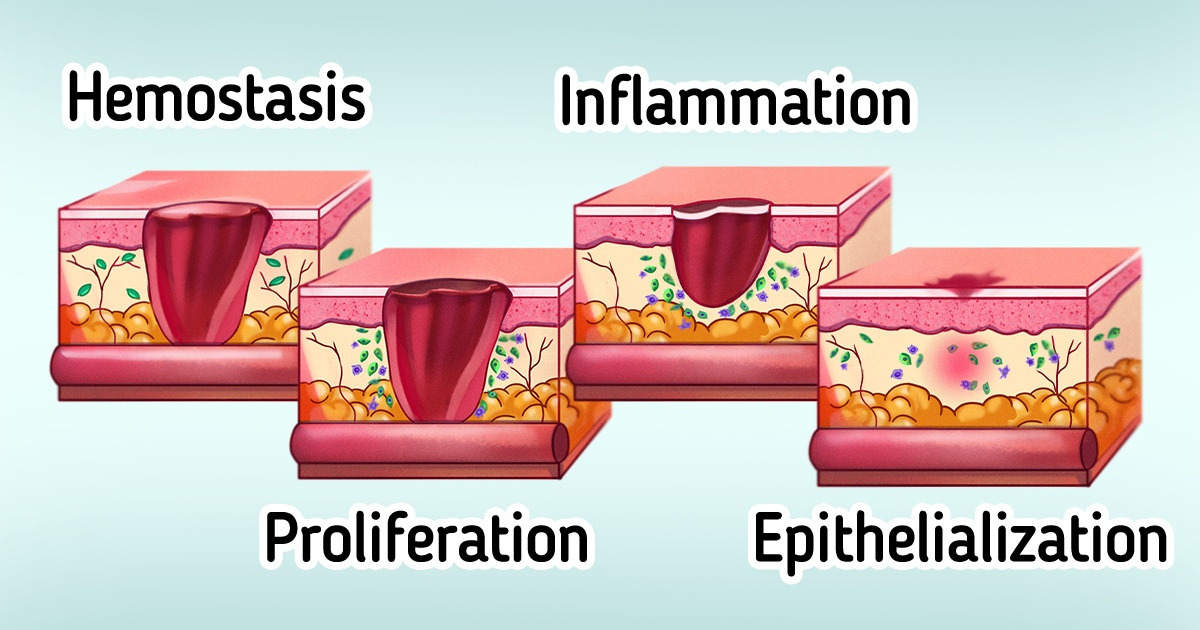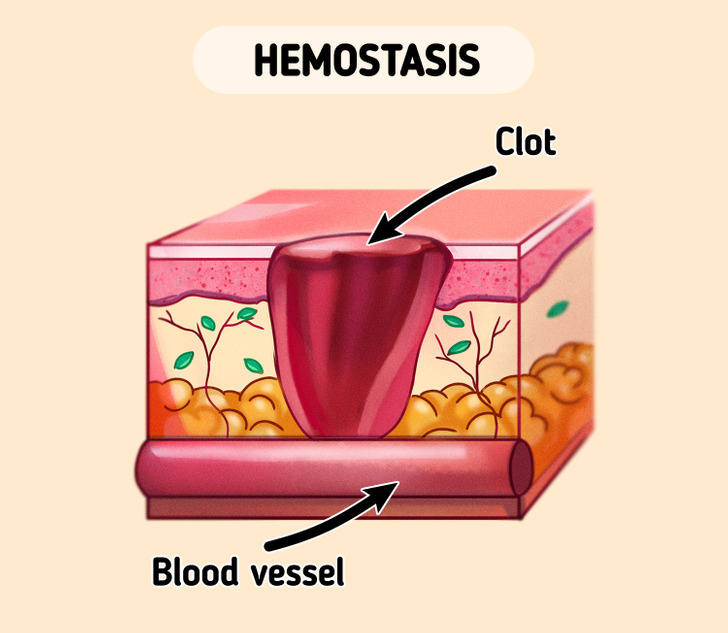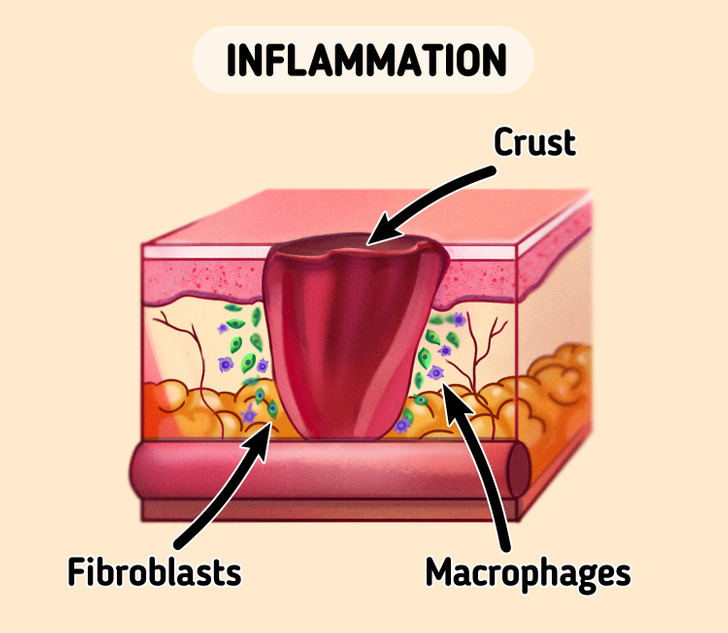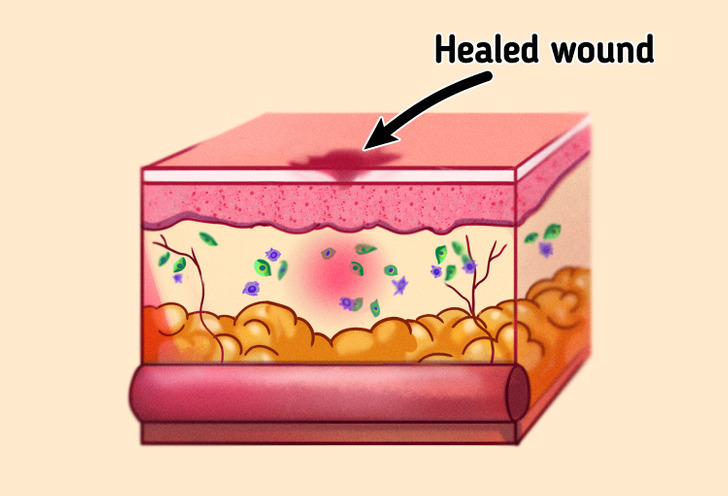How Wounds on the Skin Heal

Many people take wound healing for granted. When we damage our skin, we can take certain measures and just keep on living. At the same time, our body initiates a chain of complex processes to restore the skin.
With 5-Minute Crafts, you will find out about the stages a wound goes through during healing.
❗ Important: This article is for informational purposes only and doesn’t replace the recommendations of experts.
The skin protects us from germs. When it’s damaged, germs can get into the body and cause an infection. Wounds can be of different kinds and depths. Deep wounds can affect muscles, tendons, ligaments, blood vessels, and even bones. Even though smaller scratches heal faster, every wound requires attention.
Stage № 1: coagulation

Wounds heal step by step. After the injury, the wound bleeds. During the first several minutes, platelets start building up at the injured area and make clots protecting the wound and preventing further blood loss. This is the goal of the first stage of the healing process, called hemostasis.
Stage № 2: inflammation

The next step is the inflammation stage. At this stage, the wound is cleared from bacteria and different pathogens, along with injured and dead cells. During phagocytosis, they are consumed by white blood cells, including macrophages, preventing infection. During this period, there might be swelling and redness. In the damaged area, fibroblasts start producing. These cells help synthesize collagen.
Stage № 3: growth of new tissue

After that, the process of active healing starts, which is called proliferation. Blood cells start coming and providing oxygen and other nutrients to the wound. Regeneration starts. Fibroblasts help form new blood vessels, collagen, and other tissue. The proliferation phase continues for 4-24 days.
Stage № 4: full recovery

The last stage is epithelization when new skin gets strong. Full recovery may take days, months, and even years. But the wound area will never have its original strength.
During recovery, the skin might itch, and after the crust falls off, it might be red and shiny. The scars appear because new skin grows differently from the original skin. Whether you will have a scar or not depends on the depth of the cut: the deeper the cut, the better the chance it will leave a mark. The scar is smaller than the wound itself. It is curious that some people are more prone to having scars than others.
Complications
The process might seem quite simple, but it’s not, and it depends on many factors. Here are the reasons that might impair healing:
- Infection: the wound might get big and heal longer.
- Bad blood circulation can occur due to varicosis and atherosclerosis.
- Diabetes: people with diabetes have so-called chronic wounds that might remain there for years.
- Extra weight increases the risk of infection and might make stitches stretch.
- Age: older people require more time to heal.
- Stress affects the overall body condition and might impair healing.